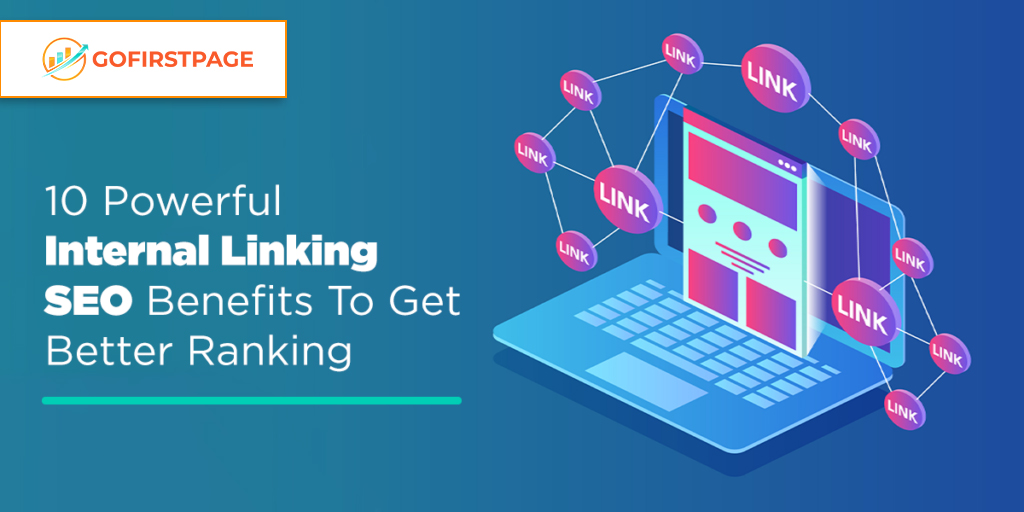Imagine a well-designed roadmap that guides users seamlessly through your website, ensuring they discover all the valuable & informative content you have to offer. That’s precisely what internal linking achieves. But if your site content remains isolated and disconnected from the rest of your website, it won’t reach its full potential. In this blog, we’ll learn what internal links are for SEO. why are internal links important for SEO ranking ? Do internal links help SEO & more. Let’s get started…
What Are Internal Links?
Internal links are hyperlinks on a webpage that points to another webpage or resource, such as an image, video, or document on the same website or domain. These types of links allow users to navigate a website easily. It is necessary to follow internal linking best practices to improve your overall website SEO.
| In layman’s terms, an internal link is one that points to another page on the same website. |
And here’s a sample of what its code looks like on the backend of a website: <a href=”http://www.same-domain.com/” title=”Keyword Text”>Keyword Text</a> |
It interconnects the pages within your website, allowing search engines to crawl and index your content effectively while providing a user-friendly browsing experience. Like, see how we are using an interlinking method to link this blog on how thin content impacts SEO to this blog naturally to connect with the context.
What Are the Benefits of Internal Links?
The process of interlinking your pages with each other comes with eleven important benefits. Understanding both the how and the why when it comes to internal links helps you optimize for your target audience.
1- Elevate User Satisfaction
SEO is not a one-size-fits-all approach when it comes to ranking factors. There is too much to consider between RankBrain, Hummingbird, BERT, and more. That’s why the focus has turned to the user experience.
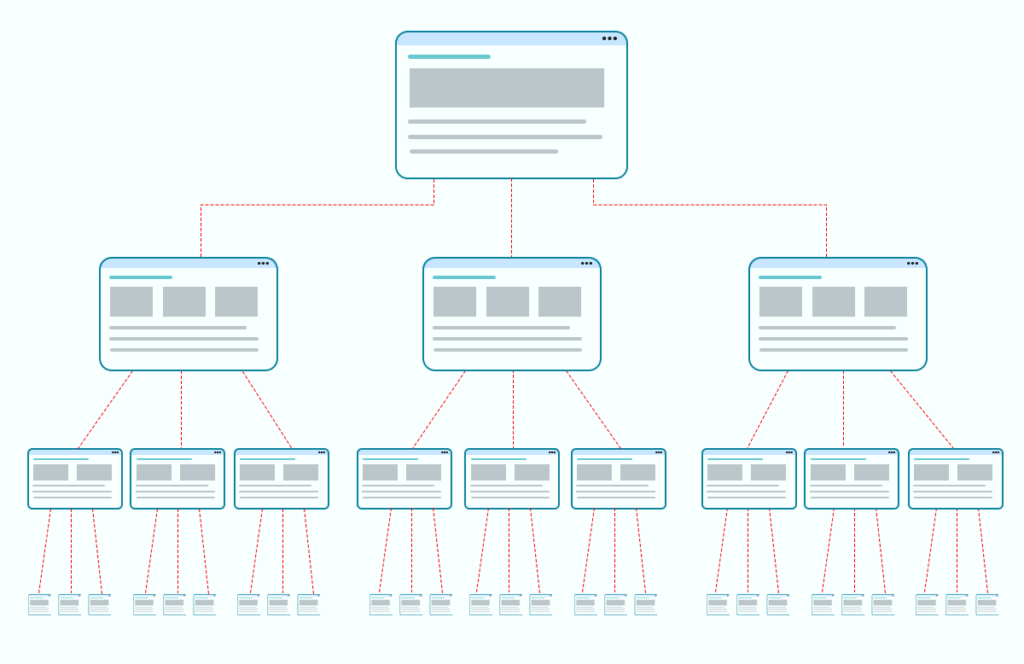
Internal links play a central role in building that online experience. They allow your audience to dig deeper and inform themselves more about a specific topic of interest. In our writing, we sometimes apply these internal links as “Recommended Reading” links to clearly call out to the reader that additional information on our site can help them understand the topic fully. Here’s one for you now …
Recommended Reading: What Are Breadcrumbs In SEO? How It Helps You Enhance The User Experience
2- Optimize Crawling Efficiency
Search engine crawlers rely on internal links to discover and index your website’s content. By strategically linking your web pages, you can ensure that search engines effectively crawl and understand your site’s structure and content.
As web crawlers move through your website, they can gain more information about your content that influences whether or not they will promote those pages in the SERPs. Any page on your website should ideally be reached in three clicks or less from the homepage. If there is no internal link to a page on your website, Google’s crawlers won’t see it.
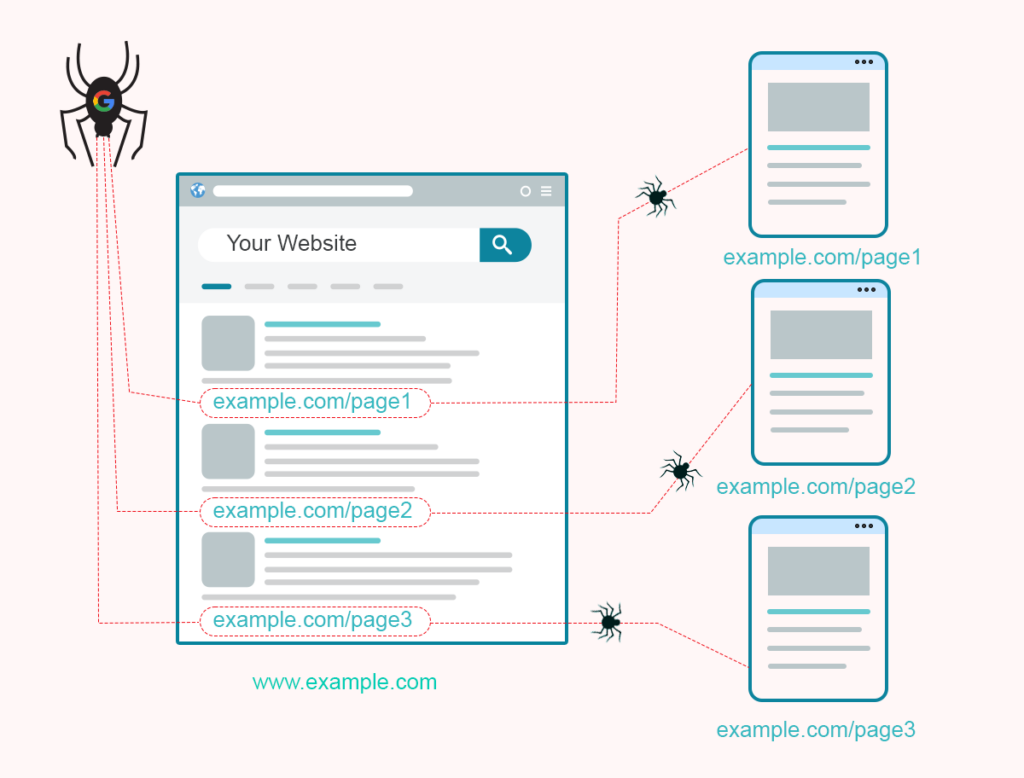
For example, if you have a website with various categories, such as “example.com/page1,” “example.com/page2,” and “example.com/page3,” you can include internal links between relevant category pages to facilitate better crawl efficiency. Making sure that the web pages you want to rank are easily discoverable by search engine crawlers and therefore crawled and indexed is an essential first step to making your website more visible on the SERP.
3- Amplify Your Link Authority
Internal linking helps distribute the link equity (authority) across your website. When you have high-quality pages linked internally, the authority passes from one page to another, ultimately boosting the overall authority of your website. For instance, if you have a highly authoritative blog post, you can strategically link it to other pages that would benefit from its authority, such as product pages or service descriptions. If you only want to focus on running your business & don’t have time to strategize SEO, then we are here to help you with our professional & affordable SEO techniques.
4- Improve Engagement Metrics
Internal linking SEO is crucial in improving engagement metrics, such as bounce rate and time spent on site. Since you lay out a clear journey for your audience to take, you can get them to explore deeper into your site and view more pages. Focus on strategic SEO auditing & content analysis so that you can guide users to relevant content within your website and keep them engaged for longer periods.
For example, let’s say you have a blog post about “Top 10 Destinations for Adventure Travel.” Within this article, you can strategically link to other blog posts that delve deeper into specific adventure activities, like “Hiking Tips for Beginners” or “Rock Climbing Essentials.” This internal linking strategy enhances the user experience and encourages visitors to explore more of your valuable content.
5- Keeps Users on Your Website Longer
By incorporating internal links strategically, you can keep users on your website for longer durations. However, you need to optimize the website layout structure to make the navigation easy for users. For example, if you have a travel blog with an article about “The Best Beaches in Southeast Asia,” you can include internal links to related blog posts on topics like “Top Dive Spots in Southeast Asia,” “Best scuba diving and snorkeling,” or “Hidden Gems in Southeast Asia.” This approach entices users to explore more content, decreasing the chances of them leaving your site prematurely.
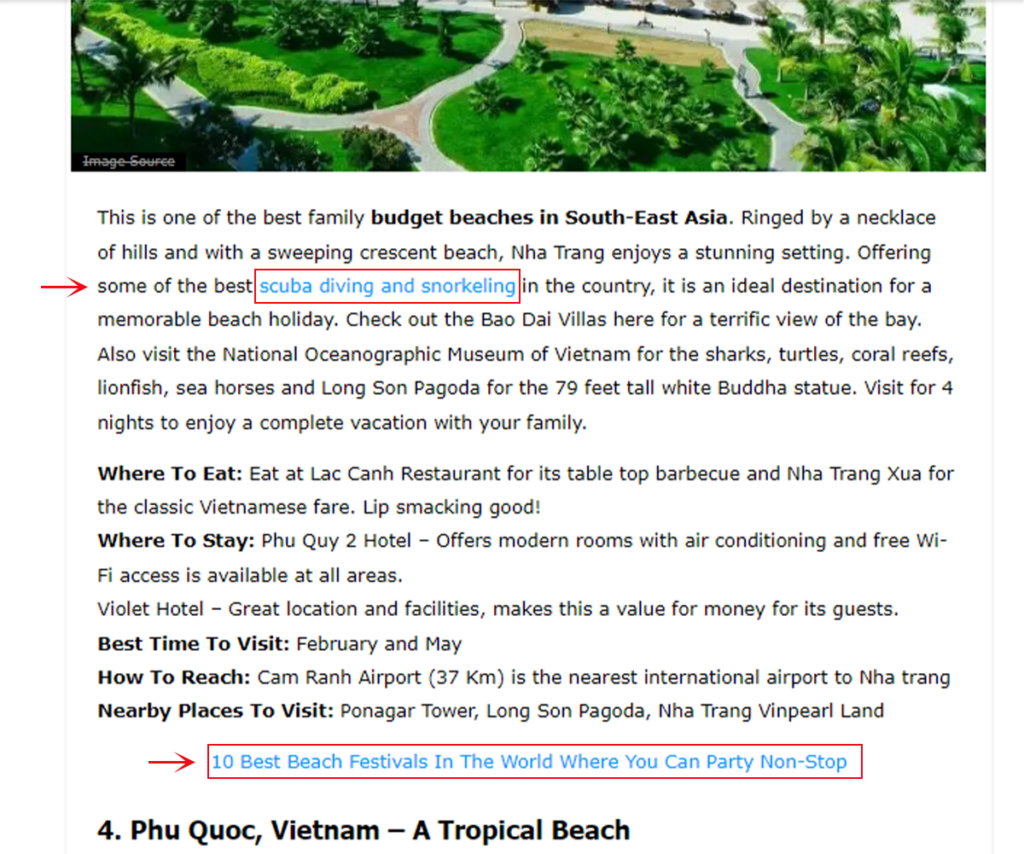
6- Maximize Returns on Investment
Internal linking SEO requires minimal effort and investment but offers significant returns. By incorporating internal links within your existing content, you can enhance the visibility and accessibility of your website’s pages, leading to improved organic traffic and engagement. This low-cost, high-impact strategy ensures that you maximize the potential of your website’s content.
7- Strengthen and Establish Brand Awareness
SEO and branding go hand in hand. A strong brand reputation directly influences how well you rank for your target keywords. However, you might not have expected that SEO is also a great channel to build your brand from scratch. How come? While only so many people search exactly for your products or services at any given moment, there are tons of users in the earlier stages of the buyer journey. What are they doing? Yeah, they research options, read information & reviews, watch how-to, etc.
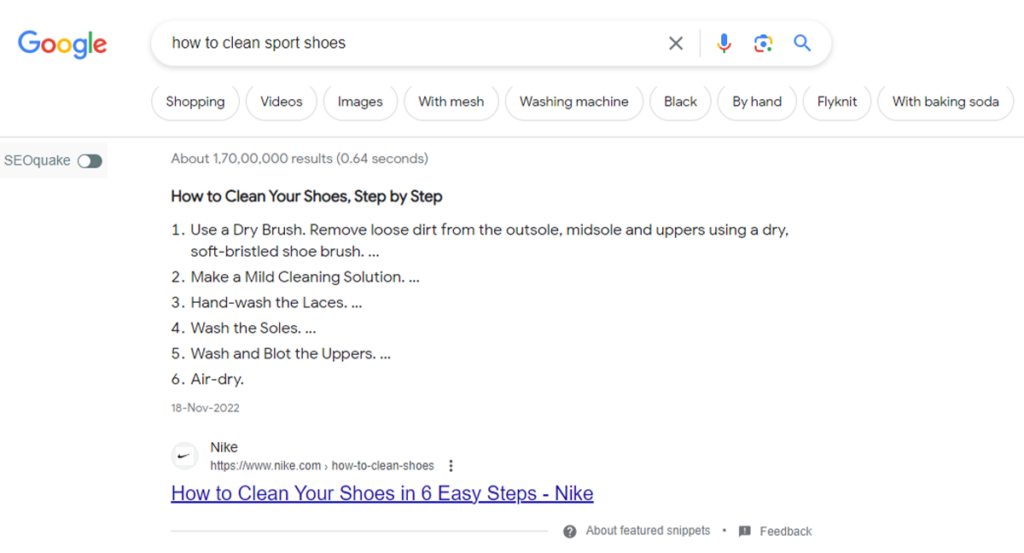
Here’s another seo brand awareness with an internal linking example, “Whirlpool”
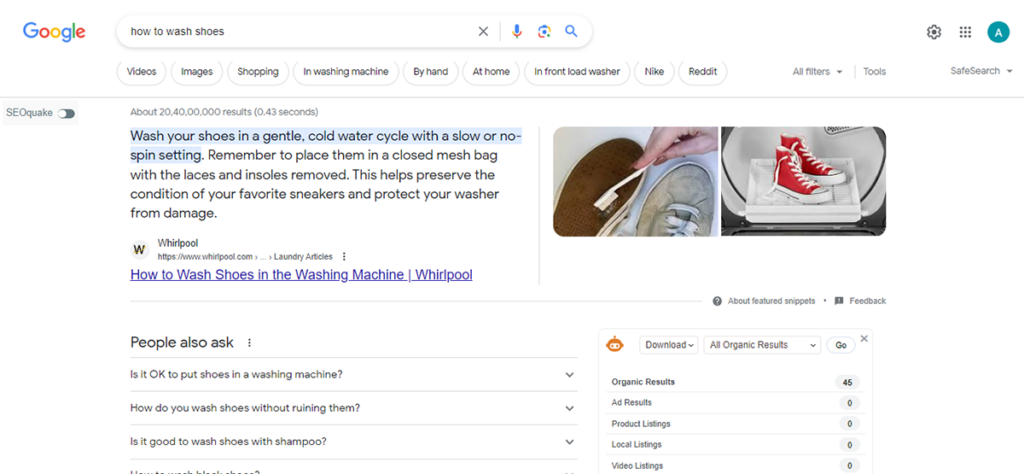
In general, we can summarize all this type of content as “Informational SEO” (aka., Informational Search, Informational Search Query) – and as the name suggests, we’re not aiming for the purchase right away. Instead, this long-term strategy aims to educate consumers and thus continuously provide new leads.
8- Keeps Older Posts Evergreen
Older blog posts tend to lose visibility over time as new content takes the spotlight. However, internal linking SEO with a content marketing strategy can bring new life into your older posts by connecting them to fresh and popular content. Let’s say you have a blog post from a year ago about “Summer Fashion Trends 2022.”
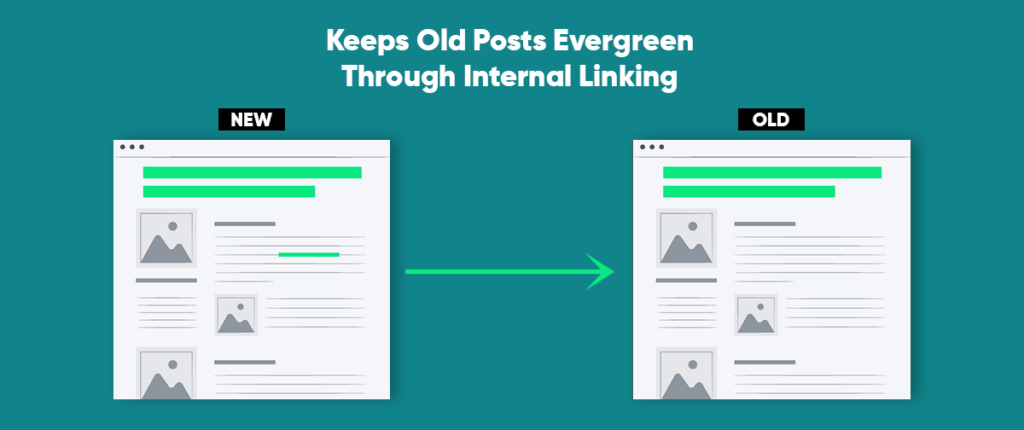
While the trends mentioned may be outdated, you can internally link this post to a newer article about “How to Transition Summer Trends into Fall” or “Retro Fashion Trends Making a Comeback.” By doing so, you not only drive traffic to your older post but also provide valuable and updated information to your readers.
9- Convert More Users
Internal linking SEO can also be a powerful tool for converting users. For instance, if you have an e-commerce website, you can strategically link & your product pages to relevant blog posts or informational articles.
Let’s say you have a blog post discussing “The Benefits of Natural Skincare.” Within this article, you can include internal links to specific product pages for natural skin care products, subtly encouraging readers to make a purchase.
10- Expand Visibility for Long-Tail Keywords
Internal linking lets you optimize your website for a broader range of long-tail keywords. For instance, if you have a blog post about “Healthy Breakfast Ideas,” you can internally link to other posts targeting specific keywords like “Vegan Breakfast Recipes” or “Gluten-Free Breakfast Options.” This approach expands your keyword reach and increases the likelihood of your website ranking for various search queries.
What Google Says About Internal Links
Google has confirmed that internal links are supercritical for SEO. The confirmation came from John Mueller during one of the office hour sessions where one of the participants asked him whether enabling breadcrumbs is enough for internal links.
According to John, internal linking is “supercritical for SEO,” and said they are one of the most important elements that help users and Googlebot understand the importance of pages within a website. John says internal links help a website owner mark those essential pages that are the backbone of a website so that users and Google are guided in the right direction.
When talking about breadcrumbs, John says that the internal link is not the primary function though it serves a purpose. He also advises webmasters to adopt a strategic internal linking SEO strategy and not just add a few basic links within the content. Instead, he means to use the appropriate anchor text while internal linking so that users and Google can understand the context. Another clarification that John gave was about the internal links in the header, footer, and body. One of the participants asked John if Google treats header and footer internal links differently from the links in the body content.
Conclusion: Enhances Your Website’s SEO Performance
Internal linking is a game-changing strategy that enhances your website’s SEO performance while improving user engagement. By strategically linking relevant pages, you can keep visitors on your site longer, improve crawl efficiency, boost conversion rates, and build your overall link equity.
Additionally, internal linking SEO helps you rank for a broader range of keywords and keeps older posts evergreen by connecting them to fresh and relevant content. So, take advantage of the power of internal linking and unlock the full potential of your website’s SEO capabilities. Start implementing this simple yet effective strategy today and watch your website soar to new heights in search engine rankings. Or Call us now @ +1 (917) 277-7780 to help you achieve higher rankings on SERPs.
FAQs: Internal Linking SEO Benefits – Everything You Need to Know
What is internal linking in SEO, and why is it important?
Internal linking is the practice of connecting your own website’s different pages through hyperlinks. It benefits SEO by improving website navigation, user experience, and search engine crawling. Linking can help Google understand your website’s structure and index your pages effectively. Internal links significantly distribute link equity, improve crawl efficiency, and enhance user experience.
How does internal linking improve organic rankings?
Internal linking improves organic rankings by allowing search engine bots to find & index your content more effectively. It helps establish topical relevance, enhances crawlability, and distributes link authority throughout your site. Also, internal linking helps search engines understand the context of your content, positively impacting organic rankings.
How does internal linking benefit user experience?
Internal linking improves UX by enabling visitors to navigate properly through your website and discover relevant content easily. By providing relevant internal links within your content, users can find additional information on topics they’re interested in, leading to increased engagement and longer time spent on your site.
How does internal linking improve search engine crawl efficiency?
Internal linking plays a crucial role in crawl efficiency by providing clear pathways for search engine spiders to navigate your website. Crawlers can follow links and discover new content more efficiently. Properly interlinked pages ensure that search engines can crawl and understand the content & structure of your site more efficiently, helping it appear in search engine results.
How does internal linking contribute to building link authority?
Internal linking helps distribute link authority across your website. When you link from a high DA PA page to other pages within your site, it passes some of that link authority, improving the overall website value. This can positively impact the ranking potential of your pages in search results.
How does internal linking improve engagement metrics?
Internal linking motivates users to dig deeper into your site, improving engagement metrics. With internal linking, you can lower bounce rates, boost page views per session and keep visitors on your site longer.
How can internal linking drive users toward conversion?
Internal linking can guide users toward conversion by strategically linking to relevant product or service pages. It offers a great ROI as it requires minimal effort and investment. By incorporating internal links within blog posts or informational content, you can lead users to landing pages where they can take desired actions, such as making a purchase, booking an appointment, or filling out a form. This helps drive qualified traffic and increases the chances of conversions.
How does internal linking keep older posts evergreen?
Internal linking brings old posts back to life by linking them to new, relevant content. Adding internal links from recent articles to old posts drives traffic to those old posts and provides users with valuable content. This keeps your old content fresh and helps ensure it continues to support your website’s overall SEO strategy.
How can an SEO agency help optimize internal linking strategies?
An experienced SEO agency can help optimize internal linking strategies by comprehensively analyzing your website’s structure and content. Digital Guider can provide expertise and guidance to maximize the benefits of internal linking. We conduct a comprehensive website analysis, identify internal linking opportunities, and implement an effective internal linking strategy tailored to your business website’s specific needs. By leveraging their knowledge and experience, an SEO agency can help you rank higher on the 1st page and achieve your business goals. Unlock the full potential of internal linking for your website’s SEO. Contact our SEO agency today and let us help you rank higher with the best SEO marketing strategies.

